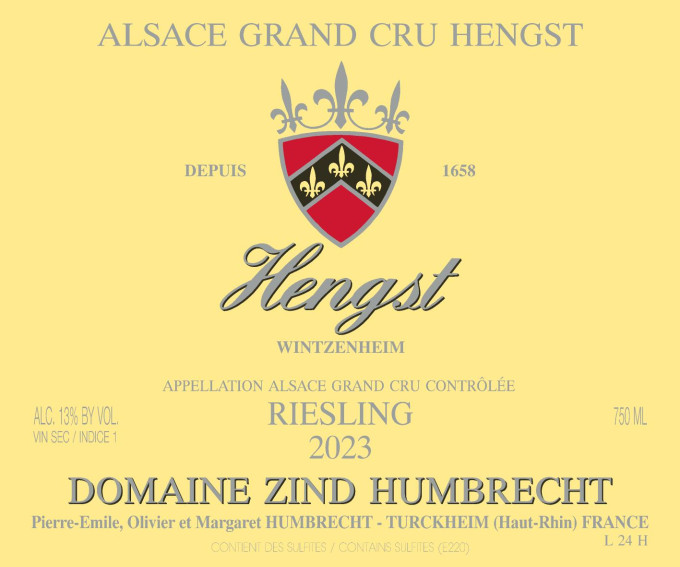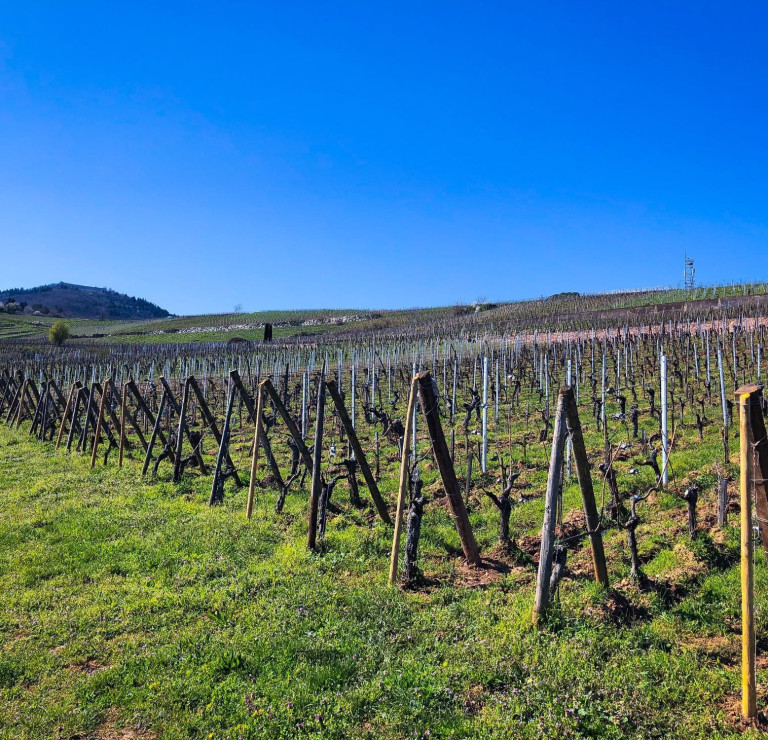
Technical presentation
| Bottling : | January 2025 |
|---|---|
| Acquired alcohol : | 13.15 |
| Residual sugar : | 3.0 g/l |
| Total acidity : | 4.1 g/l H2SO4 / (6.3 g/l Tartrique) |
| pH : | 03.09 |
| Yield : | 30 hl/ha |
| Optimum tasting : | 2027-2048+ |
| Average age of vines : | Vines planted in 2016 |
| Grape variety : | Riesling |
| Terroir : | Grand Cru Hengst |
| Sweetness index : | 1 |
| Soil : | Calcareous Marl from the Oligocene period, East facing, medium/steep slope |
Description of the wine Riesling Grand Cru Hengst 2023
The Grand Cru Hengst de Wintzenheim is located on a limestone substrate from the Oligocene, rich in iron (red) and benefits from a hot and dry climate with slopes going from the east to the south-east. For a long time, Gewurztraminer was the dominating grape variety cru, but the evolution of the climate has allowed the development of reds but also Riesling, especially on the east facing part of the Hengst. The vines are still young but planted in high density on soil cultivated biodynamically since 1998 and with mass selections from our Brand vines, they have been able to colonize this terroir in depth very quickly. In 2023, the small grapes were very ripe and in good health. A slow but regular fermentation resulted in a dry wine. The plots producing this wine are located at a short distance from Clos Häuserer, but the soil there is much shallower, and the presence of limestone and calcareous sandstone strongly influences this wine.

Tasting notes
01/2025: Deep pale-yellow colour. The nose expresses a beautiful maturity, and, despite the austerity of the limestone, we find discreet aromas of honey, stones, ripe citrus fruits… On the palate, this 2023 gives off a sensation of power and density, tightening on the finish to reveal a beautiful firm acidity that reinforces the dry character. Already very expressive, we nevertheless feel an enormous capacity for ageing. The structure is pure and linear with a beautiful persistence. This wine is a strong part of our range of Grands Crus Riesling.

The Hengst Grand Cru of Wintzenheim
The Hengst was first mentioned in the 9th century in an endowment of the Murbach Abbey. The lord of Haut Landsbourg as well as the bailiff of Kaysersberg shared the feudal rights up to the Great Revolution, whilst various noble families, abbeys and the bourgeoisie of Colmar exploited important parcels.